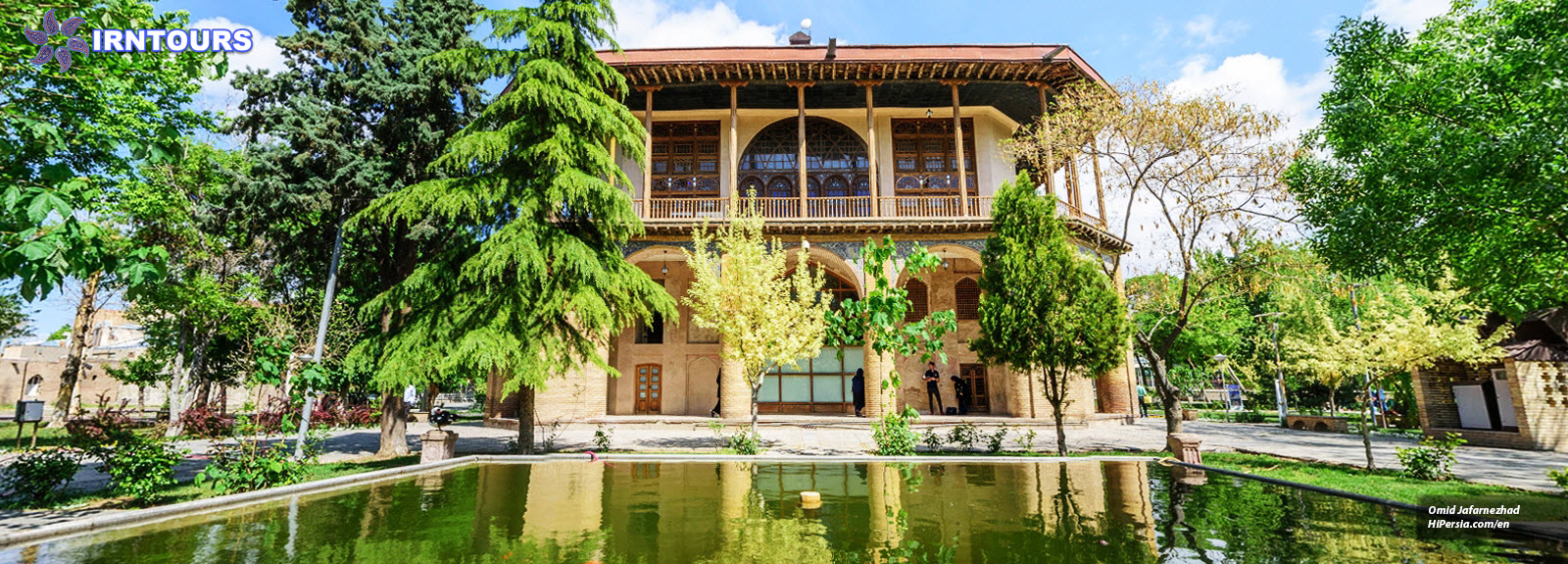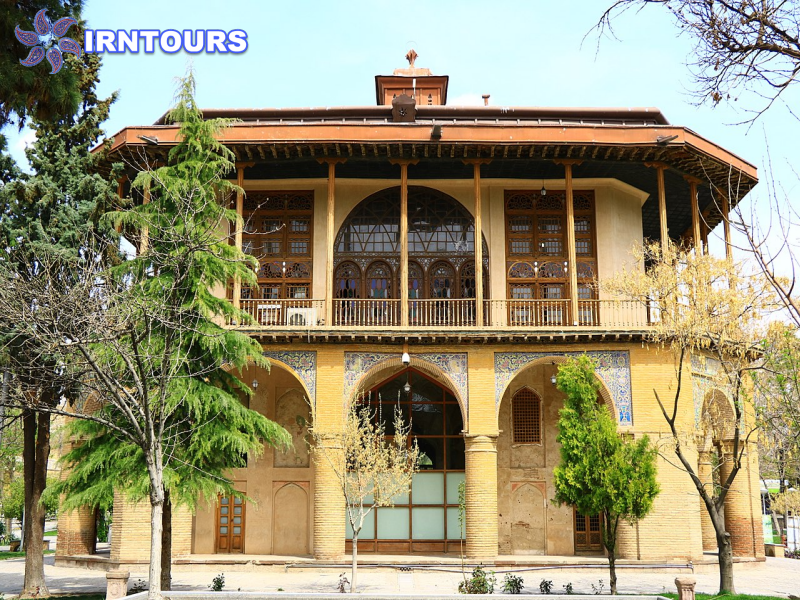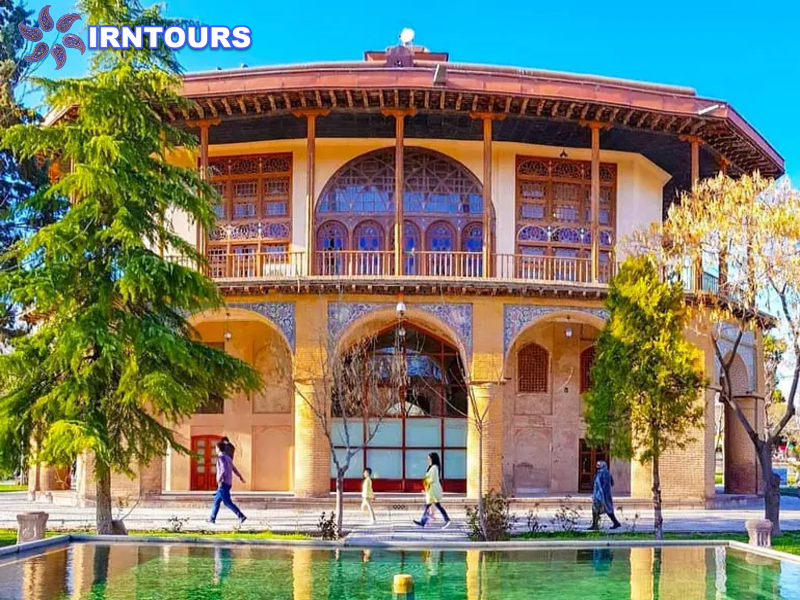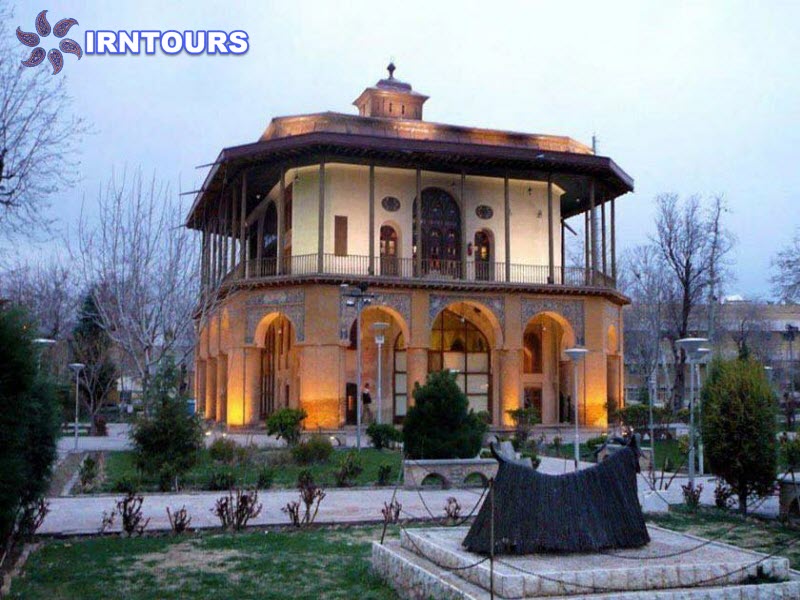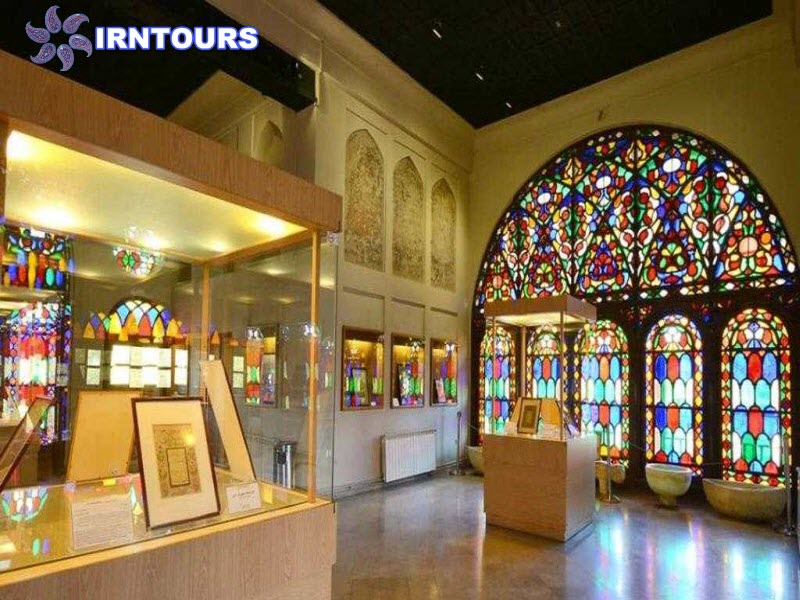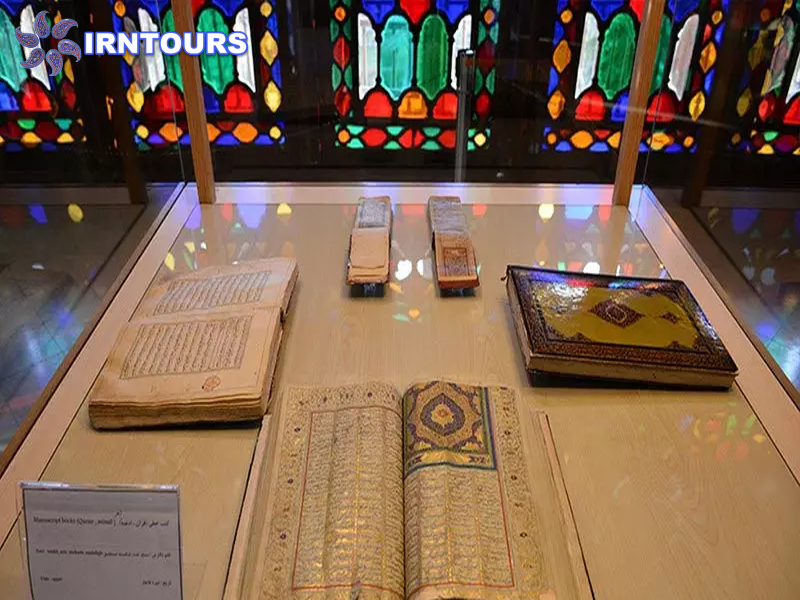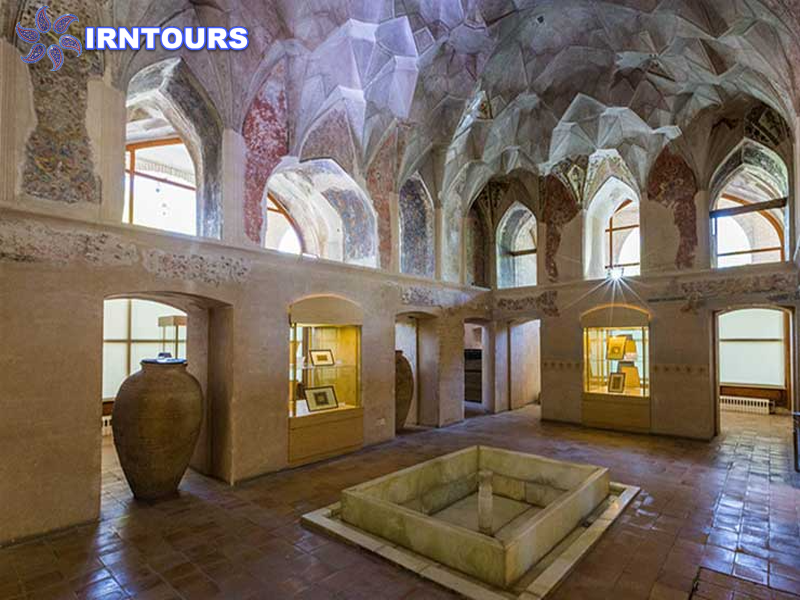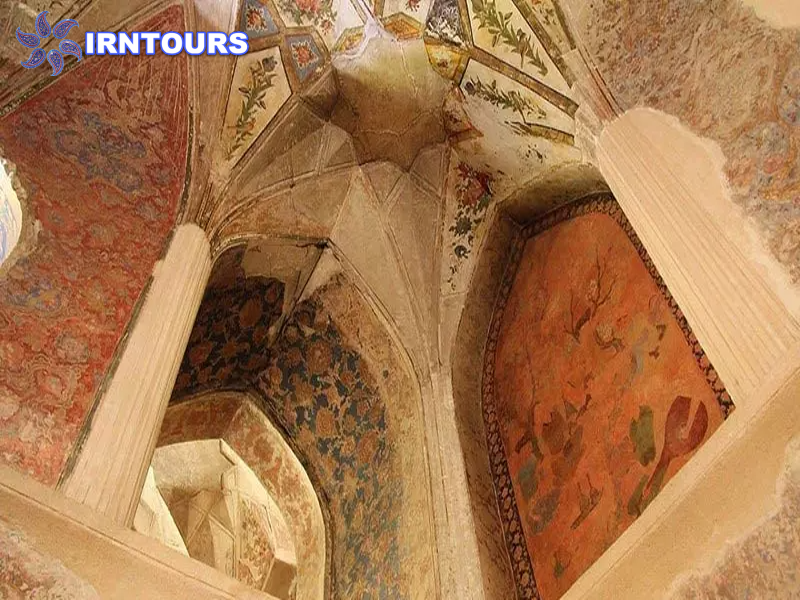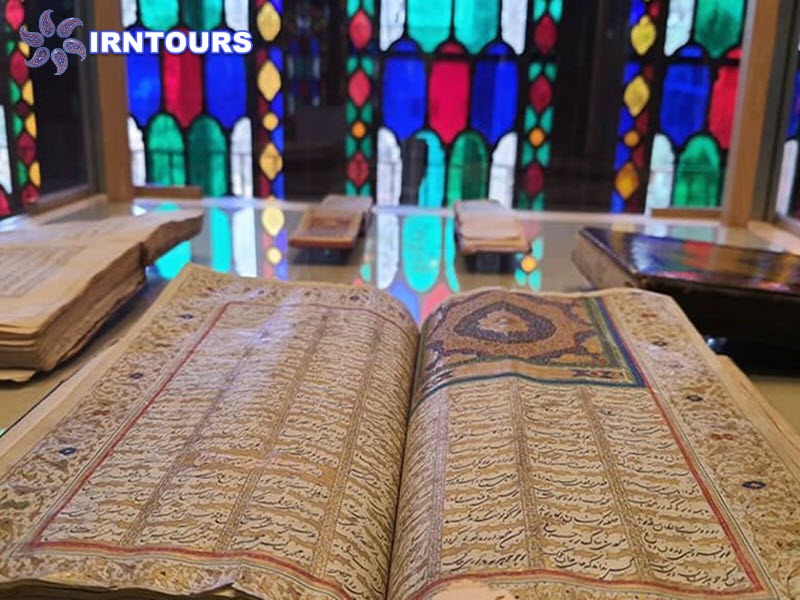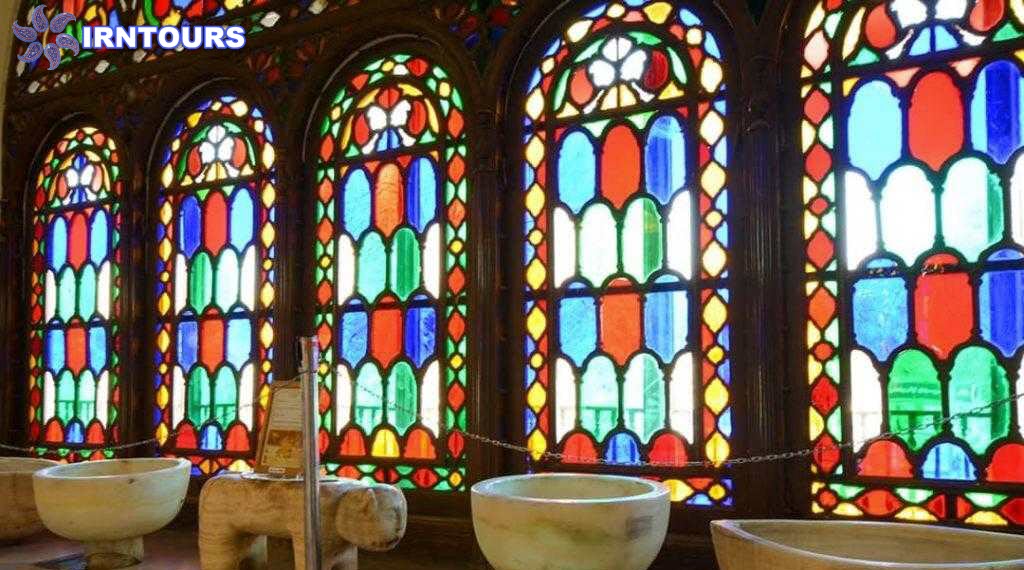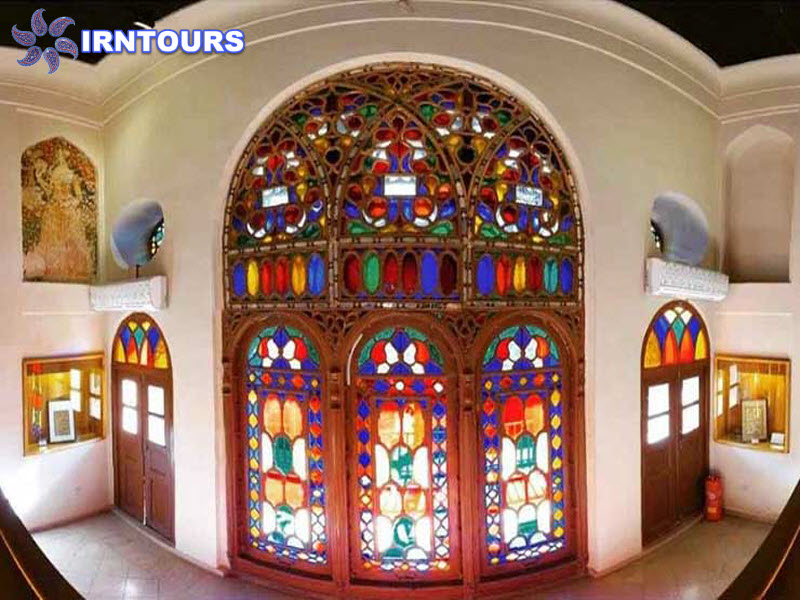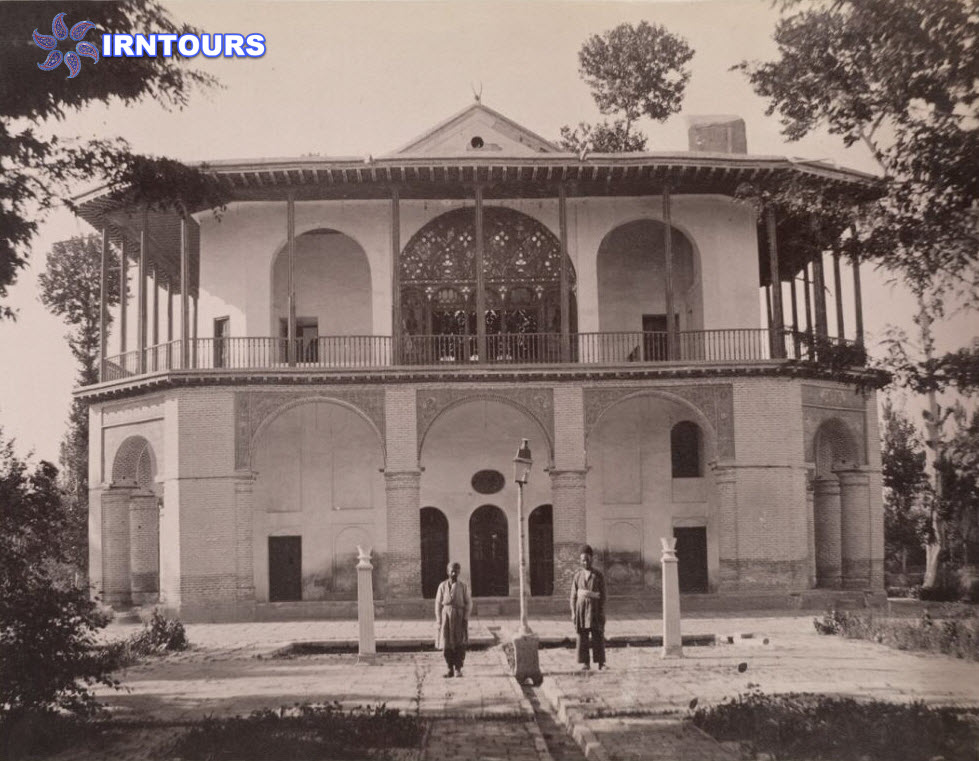
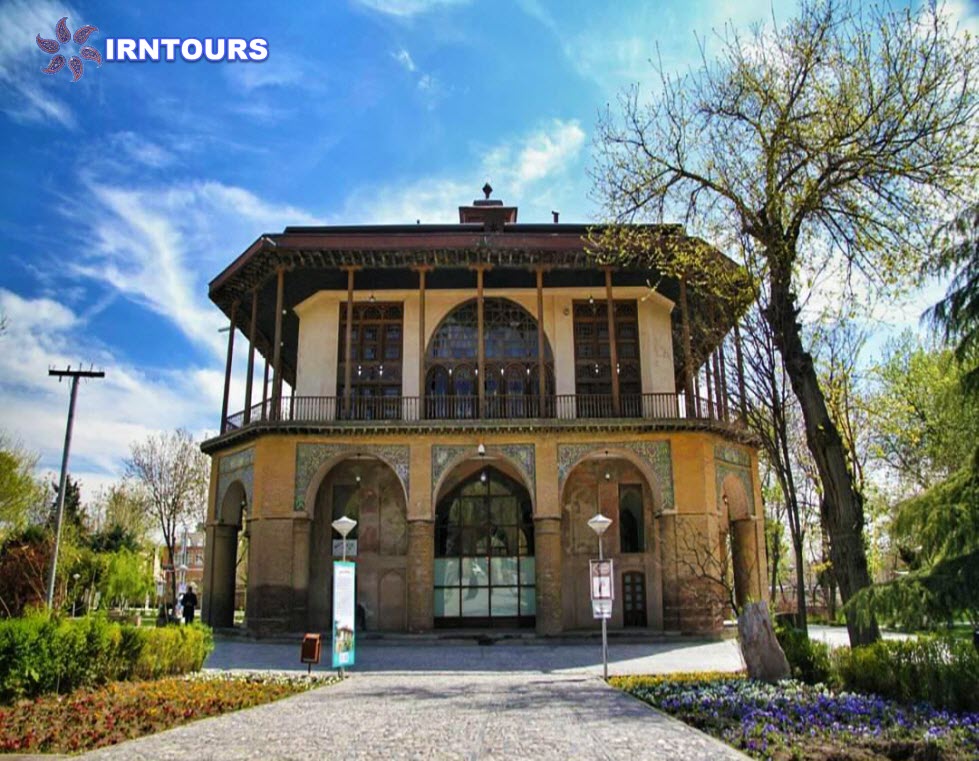
Chehel Sotun Palace ( Qazvin )
Chehelston mansion or Kolah Farangi is one of the important works of the Safavid period and the only remaining pavilion of the royal palaces of Shah Tahmasab in the middle of the 10th century AH. This building, which has an area of about 500 square meters, is built on two floors based on Iranian architecture and includes wall paintings that are a rare example of Qazvin school art. This magnificent palace, which was registered in the list of national monuments of Iran in 1995, became the Qazvin calligraphy museum in 2004 and today is considered one of the most famous sights in Qazvin.
History of Qazvin Chehelston Palace
Forty Seton Palace is one of the most beautiful and valuable historical buildings of Qazvin city, which dates back to the Safavid period. In 951 AH, the Safavid Shah Tahmasab decided to move the capital from Tabriz to Qazvin due to the attacks of the Ottoman Turks. He needed a building suitable for the king of Iran, so he bought Zangi Abad lands from Mirza Sharaf Jahan, one of the nobles of Qazvin city. Shah Tahmasab ordered the chosen architects of the country to build a square-shaped garden in it, and build magnificent mansions, halls, porches, and beautiful ponds in it.
Kolah Ferangi Mansion along with Aali Qapu Palace are the only remaining buildings of the Safavid Garden. This garden was very big; So that its length was extended from the street located in the north of Sabzeh Maidan to the yard of Naderi, and its width also extended from the front of the post and telegraph office to the west wall of the National Bank branch. These streets destroyed a large amount of this garden and a large part was dedicated to the public promenade called Sabzeh Maidan.
During the Qajar period, Mohammad Baqer Saad al-Sultaneh, the governor of Qazvin, rebuilt it and named it Chehelstan in memory of the glorious days of the Kolah Ferangi mansion. During this period, parts were added to the second floor, which changed its appearance and interior to some extent. Unfortunately, this mansion changed its use during the Pahlavi period and was used as a governor’s office. In 1957, the plaster paintings were unmasked and revealed. In 1973, they peeled off these paintings and took them down, which caused a lot of damage to the building.
After the Islamic Revolution, Chehelston Palace was restored and renovated; So that in 1978 it was rolled around the porches. Between 1981 and 1982, they removed its wooden columns and replaced them with iron beams. Also, in order to remove moisture from the building, they made channels at the base of the columns.
In 1992, the gable roof was repaired to prevent rainwater and snow from entering the building. In recent years, the use of the palace has been changed to a calligraphy museum and heating, cooling and safety systems have been added to it.
Architecture of Qazvin Chehelston Palace
Chehelston’s two-story palace is in the form of an octagonal column and has an area of about 500 square meters. The plan of this palace includes a plan with cruciform and outward axes. Shah Tehamasb built this mansion from the Turkish architectural plan in a much smaller checkerboard style, where each floor includes a hall and small rooms.
Among the interesting points of the architecture of Chehelston Palace, we can mention its connection with the Safavid government palace complex, which are connected to each other through underground tunnels. These underground tunnels are stretched to the outside of the city and were originally built for emergency exit from the palace during an enemy attack.
It is said that among the historical monuments of Iran, the architecture of Hasht Behesht Palace in Isfahan is very similar to Chehelston Palace in Qazvin; except that the Hasht Behesht Palace does not have the corridors and gholams that can be seen around the Chehelston Palace. Eight Heavens, like Chehelston Palace, has an extroverted and eight-cornered plan, and its inner rooms are asymmetrical; But they look symmetrical on the outside. Also, both buildings are built in the middle of a garden, which in Iranian architecture is called koushk.
Different parts of Qazvin Chehelston Palace
- Chelestun Palace entrance : One of the beautiful parts of Chehelston mansion is its several brick entrances, each of which is decorated with ceramic tiles, flower motifs and traditional Iranian images.
First floor of Chehelston Palace (Qazvin)
The first floor, which belongs to the Safavid period, has a large hall with four rooms with different designs on its four sides. Four porches can be seen in this building, which were open in the past and the air flow passed through them, which led to the pleasant coolness of the interior; But today they are closed with windows to protect the building and its decorations. Besides, the slope of the entrance made the air to be directed from the outside to the center of the structure and to carry out the ventilation process well. In the center, north and south of the first floor, there were ponds, which added to the coolness of the air inside the building due to their water flow, and its sound brought peace to the residents of the building. Currently, only the central and southern ponds remain and have been restored. The water flow is also shut off to prevent moisture.
A portico with brick columns and semicircular arches surround this floor. Beautiful paintings can be seen in almost all the buildings that belong to the Safavid and Qajar periods. The ceiling of the first floor has beautiful moqrans, which shows the high art of its creators. The floor of the mansion used to be covered with bricks, but now the cultural heritage organization has covered it with clay.
The Second Floor of Chehelston Palace (Qazvin)
In the past, access to the lower and upper floors was through the eastern staircase, which is now blocked, and the passage is made through the northern staircase. This staircase was also carpeted in the past; But today it has been restored with marble.
Passing the stairs, you enter one of the earring rooms in the palace. From this room, you can enter a large and bright hall called Morteza Hall. On the four sides of this hall, there are four earring rooms, only one of which is the connection between the lower hall and the upper hall. The earring rooms belong to the architecture of the Qajar period and were not present in the original plan of the building.
The second floor underwent many changes during the Qajar period. Its sashes bring light and color to the interior of the mansion from four directions. The glasses of these sashes are made in Germany and represent the four seasons of spring (green), red (summer), yellow (autumn) and blue (winter). Quranic verses and words add to the beauty of sashes. In the past, there were paintings adorning this part of the mansion; But today, only dark green color can be seen in it.
On the exterior of the second floor and around its great hall, they built a ghulam sharhami (corridor around the hall) which was decorated with fine and smooth wooden columns in the Qajar period.
Decorations of Chehelston Palace in Qazvin
The eastern tower, which is older than the western tower, was built in 460 AH with a height of 12.45 meters and an octagonal plan. Next to each side of this tower, there are half-columns with seven half-columns with a diameter equal to 95 cm and two other half-columns with a diameter equal to 140 cm. In these two larger half columns, spiral stairs are built. To reach the stairs, you have to go through a short rectangular door that is inside the tomb room. The number of steps in each staircase is 22.
The building of Kharraqan Towers is built with simple bricks with a thickness of 60 cm, then a decorative covering with bricks with a thickness of 21 cm is implemented on it. The covering of this tower is one of the first examples of double covering with elliptical curvature. Before the earthquake of 2001, a small part of the outer covering of the dome was left and now its inner domes are intact.
According to the historical features of the tower, it can be said that among the two-shelled domes whose second shell is not conical, this building is considered the first two-shelled dome of the 5th century AH, and it is important from this point of view.
Chehelston Palace of Qazvin is not only known for its architecture and history, and the paintings on its first floor are very famous. Safavid Shah Tahmasab was an art-loving king and this can be clearly seen in the construction and details of the Kolah Ferangi mansion. The wall paintings on the first floor depict an excellent form of Qazvin school painting art. Due to the change of use of the building during the Pahlavi period, these paintings suffered a lot of damage and plastered over them. The second floor was also full of decorations and paintings of which there are no traces left except for a few paintings.
There are three layers of paintings on the walls of this building, the first and second layers are related to the Safavid period and the third layer is related to the Qajar period. In the Safavid period, water colors were used in paintings and the colors were softer; But in the Qajar period, they went for vegetable dyes and the colors became a little sharper. These images were affected by their contemporary political changes and developments; In such a way that even traces of Nadershah Afshar and the Afshariya school can be seen in them. The number of paintings is not known; Although it is said that they were drawn on a wall of golden water.
The paintings of the Safavid period on the first floor were miniatures and included soft lines of twisting and curving bodies of men and women. Artists in this period were very good at drawing romantic scenes.
Another role in the murals can be seen as the role of birds such as red breast, sparrow, duck, pheasant, etc. The outline of the birds and the precision used to draw them can be compared with the famous works of Reza Abbasi, Shafi Abbasi and other artists of this period.
On the panel of the north facade of the building, there is a scene of a feast and includes a view of a garden with flowering trees and a stream. The panel of the eastern porch is considered one of the best works of the palace in terms of brightness and use of color. In this work, golden, blue, pistachio nuts, different forms of clothes and different body postures are used with special softness.
Abdi Bey Shirazi, a contemporary poet and historian of Shah Tahmasab, describes the Kolah Ferangi mansion well in his poems; But he did not name its architects. He considers the paintings of Chehelston Palace to be the work of Mirza Ali Naqsh, Mozafarali Naqsh, Ali Asghar Naqsh, Abdul Javad Estrabadi and Reza Abbasi.
Among the other prominent decorations of the Kolah Ferangi mansion in its heyday, we can mention the inlaid doors, unique tiling and gilding, which dazzled the eyes of every viewer. The decorative motifs and slime and error circulations that were created in the form of layering and using the combination of lapis lazuli and gold, gave the building a double beauty.
Qazvin Calligraphy Museum
The Qazvin calligraphy museum is one of the richest calligraphy museums in Iran, which is located in Chehelston Palace. In addition, the historical works and objects of the palace are also exhibited in this museum. The calligraphy works of this Qazvin calligraphy museum are created with different lines such as naskh, thulht, ansan, nastaliq and broken nastaliq and are the art of the great calligraphy masters of Qazvin and Iran. Among these elders, we can mention Mir Imad Qazvini, Emad al-Katab, Malik Mohammad, Darvish Abdul Majid, Mir Ali Heravi, Malik Deilmi, Vasal Shirazi, Zainul Abdin Qazvini, Mirza Gholamreza, Mir Hossein Khoshnavisbashi, Khaje Akhti and Ahmad Nirizi. It is interesting that the type of writing of these works represents the calligraphy art of the Qazvin school.
Calligraphy panel, calligraphy effect on a vertical panel, vertical panel of calligraphy, calligraphy panel
At first, to collect the works of this museum, it was referred to the treasure of the Qazvin Museum; But there was no work to display in the calligraphy museum. Also, other museums of the country were not satisfied to donate their works to this museum. Therefore, the help of personal collectors of Qazvin and calligraphers such as Mahsass Mansherari, Pilehchi and Aamili was taken and the purchase of calligraphy works and historical panels for the Chehelston Palace Museum started in 2002.
Tips for visiting Chehelston Palace in Qazvin
Visiting hours of Qazvin Chehelston Palace are from 9:30 to 18:30.
The cost of the entrance ticket to visit the palace in 1401 is equivalent to 4000 Tomans.
Chehelston Palace is not adapted for the visit of the disabled, the elderly and people with mobility problems, and the long and inappropriate stairs have made it impossible to visit the second floor.

